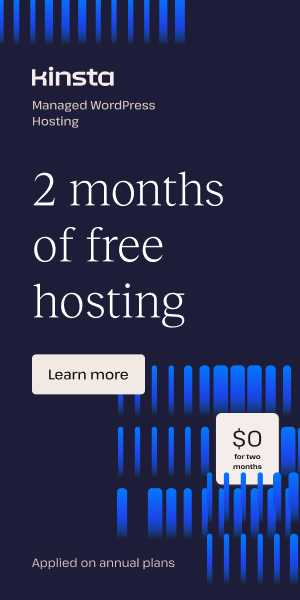Navigation Design from Figma to WordPress
Mastering Seamless Website Navigation Creation
In the rapidly evolving digital landscape, navigation design is paramount to ensuring user engagement, intuitiveness, and accessibility on websites. This becomes particularly crucial when converting Figma designs into a WordPress site, where maintaining the fidelity of your initial creative vision is essential for brand consistency and user experience. In this comprehensive guide, we explore how to effectively translate sophisticated navigation menus designed in Figma into fully functional WordPress menus, emphasizing figma menus wp integration, navigation UX best practices, and WordPress menu setup.
Understanding Navigation UX in Web Design
Creating a successful navigation system is about more than just linking pages; it involves crafting a fluid and intuitive user journey. Navigation UX focuses on:
- Clear hierarchy and labeling to help users find content effortlessly.
- Consistent placement to meet user expectations, often at the top or side of the page.
- Responsive behaviors that adapt smoothly across devices, maintaining usability on desktops and mobiles.
Designing your navigation in Figma lets you prototype these interactions visually. Thanks to Figma’s powerful tools such as Iconify plugin for icons and component variants for states, it’s easier than ever to visualize responsive, interactive menus before coding.
Key Principles for Navigation Design on Figma
- Use Auto Layout: Arrange your menu items dynamically, so they adapt automatically when you add or remove elements.
- Component Variants: Create menu states for hover, active, and disabled to visualize real interactivity.
- Consistent Iconography: Utilize scalable vector icons from trusted sources like FontAwesome or Feather Icons.
- Prototype Navigation Flows: Use Figma’s prototyping features to simulate how users will move through your menu system.
Converting Figma Navigation Menus to WordPress
Once your navigation design is perfectly crafted in Figma, the next critical step is transitioning that design into a fully operational WordPress menu. This process involves several stages:
1. Exporting and Preparing Design Assets
Export your navigation icons, logos, and background assets in optimized formats like SVG and PNG to ensure crisp visuals and fast load times. Tools like Smush Image Compression help maintain performance.
2. Building the WordPress Menu Structure
Navigate in your WordPress dashboard to:
- Appearance → Menus
- Create a new menu, ideally named “Primary Menu” or similar for clarity.
- Add your pages, categories, or custom links to the menu to reflect your Figma design.
- Assign the menu to a theme location, commonly the primary navigation area.
For deeper customization, you might edit or create a header.php file within your active theme to insert custom HTML and PHP code mimicking your Figma layout or use WordPress page builders such as Elementor or Gutenberg blocks for a code-free approach.
3. Styling via CSS to Match Figma Design
Manual CSS coding or theme customization allows you to replicate the exact colors, typography, spacing, and interaction effects from Figma. For example, frameworks like Bootstrap can speed up your responsive layout styling, aligning code with your visual design. Using browser developer tools is key for iterative refinement.
4. Enhancing Navigation with Plugins and Custom Code
To replicate advanced navigation animations or interactivity designed in Figma (such as dropdowns, sticky headers, or animated 3D menus), WordPress plugins like Max Mega Menu or custom JavaScript can be incorporated. This way, you keep your site engaging without sacrificing performance.
Real-World Example: Turning Figma Design into WordPress Navigation
Consider a premium agency website designed entirely in Figma with a custom top bar, icon-laden navigation, and smooth hover animations. This design:
- Used components with variants to simulate menu states.
- Included vector SVG icons for social links and search functionality.
- Had a sticky header for easy access on scroll.
To convert this into WordPress:
- Exported icons as SVG and optimized them.
- Created a WordPress menu with placeholders for pages and custom links.
- Customized theme files to add the header with PHP and HTML reflecting the Figma layout.
- Added CSS styles matching Figma’s color palette and typography, using Google Fonts through Google Fonts.
- Installed the Sticky Menu Plugin for header stickiness.
- Implemented a lightweight JavaScript snippet for smooth hover transitions.
The final WordPress site maintained design fidelity while enhancing real-world usability and responsiveness.
Pro Tips for a Smooth Figma to WordPress Menu Workflow
- Organize Figma Layers and Naming: Clearly name your layers and groups in Figma to make exporting and coding easier.
- Test Responsiveness Early: Use Figma’s device frames and test WordPress on multiple screens to ensure consistency in navigation UX.
- Use Local Development Environments: Platforms like XAMPP allow you to build and preview your site before going live.
- Leverage Page Builders When Needed: For clients requiring frequent edits, integrate with Gutenberg or Elementor to empower non-technical users with navigation management.
- Optimize for Performance: Use caching plugins such as WP Super Cache to ensure that elaborate navigation designs do not slow down your site.
Extending Beyond Basics: Advanced Navigation Menu Ideas
Modern navigation design is becoming more dynamic and interactive. Consider:
- Animated 3D Menus: Using Figma tutorial inspirations like this, designers create visually striking navigation with depth and motion, which can then be translated into WordPress menus using CSS3 and JavaScript.
- Sticky and Off-Canvas Menus: Popular especially for mobile navigation, enabling menus that slide in or stay fixed enhances usability.
- Icon-Only and Minimalist Menus: For aesthetic and functional simplicity, using only icons as menu items, supported by tooltips, can create a clean interface.
Harnessing talents from sources like Crocoblock’s guide can bolster your skills in bridging high-fidelity design and coding precision, thereby unlocking professional-grade websites.
Your Next Steps to Navigate Success
Figma offers a powerful platform for crafting detailed navigation designs, and WordPress provides a flexible ecosystem for bringing those designs to life. By understanding how to translate figma menus wp concepts into WordPress menu setup, designers and developers can provide intuitive, engaging navigation experiences that delight users and boost site performance.
To elevate your project, consider partnering with experts who specialize in this transition. Visit Figma2WP Service for professional help turning your Figma navigation designs into flawless WordPress menus. For personalized consultations, don’t hesitate to Contact Us and discuss your specific project goals.
Explore the possibilities, hone your workflow, and deliver navigation solutions that perfectly blend form and function!
More From Our Blog
Crafting Engaging Media Portals with Effective Article Design Creating a compelling media portal today demands exceptional attention to both aesthetics and functionality. The design of article pages, user navigation, and responsiveness play a decisive role in reader engagement and retention. Especially when it comes to transforming designs from platforms like Figma into fully functional WordPress Read more…
Elevating Your Online Presence Through Engaging Social Design and Community WP Building a vibrant community WP (WordPress) site is increasingly crucial in the digital age for brands aiming to foster trust, loyalty, and dynamic interaction among their customers. By integrating Figma2WP Service solutions, businesses can transform precise figma social design prototypes into powerful WordPress-based discussion Read more…


